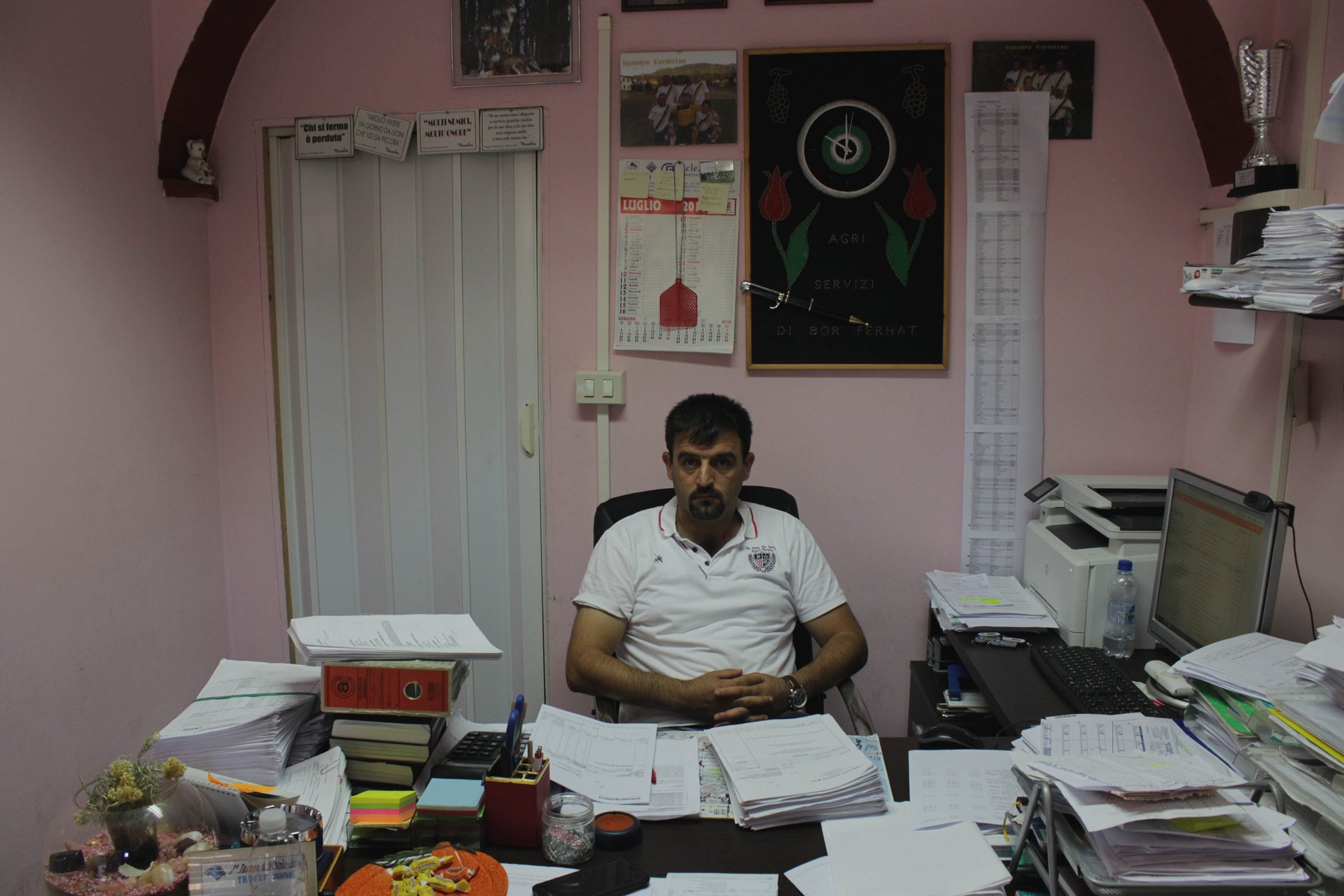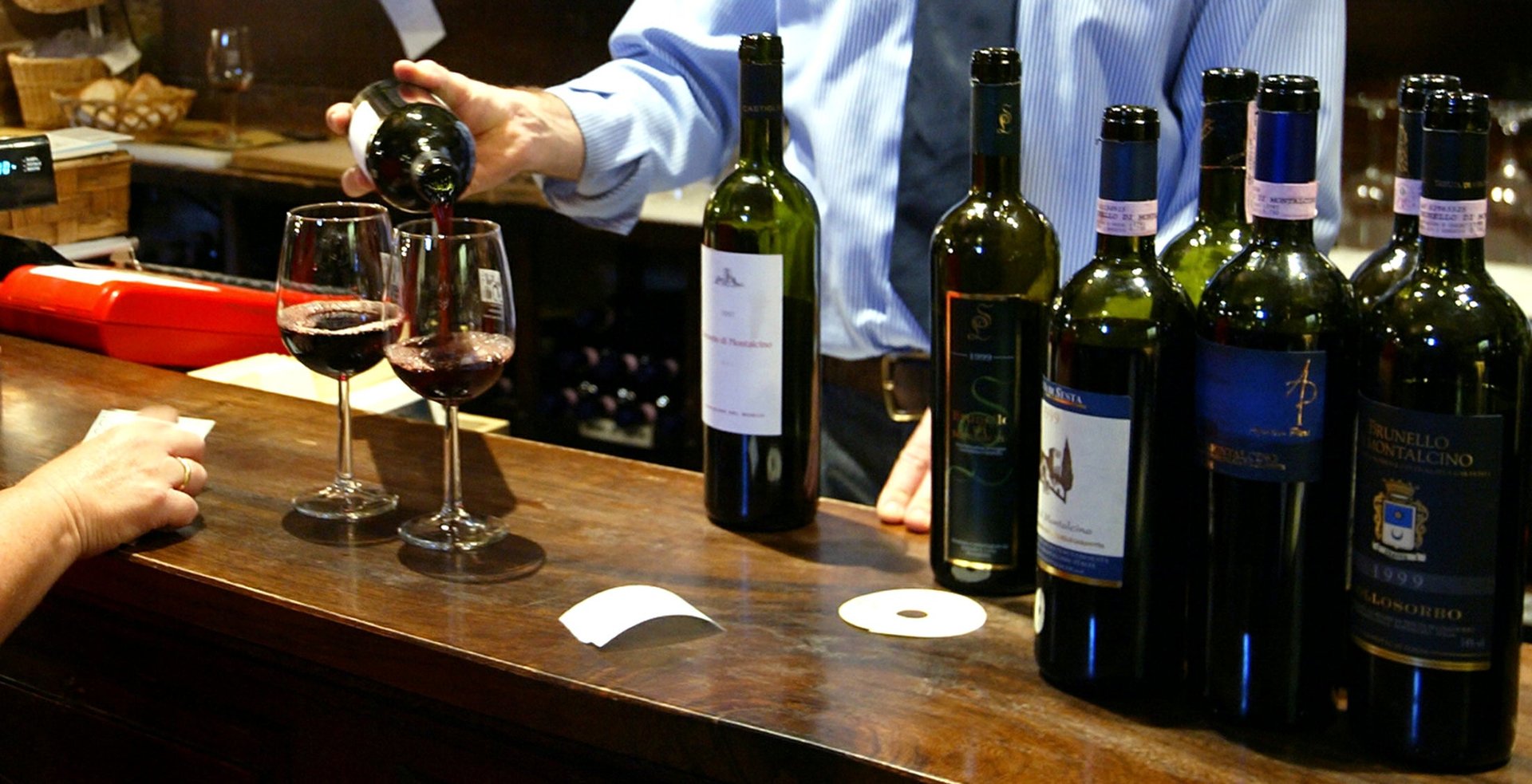Enjoying that delicious glass of expensive Tuscan wine? You can thank immigrants for that
On any given day, Ferhat Bor’s office, perched on top of a hill in Tuscany, is bustling with activity. The 41-year-old Kurdish refugee arrived in Italy illegally by boat more than 15 years ago. He’s now an Italian citizen, and his company, Toscana Agri Servizi, supplies teams of immigrant laborers to wine producers throughout the region.


On any given day, Ferhat Bor’s office, perched on top of a hill in Tuscany, is bustling with activity. The 41-year-old Kurdish refugee arrived in Italy illegally by boat more than 15 years ago. He’s now an Italian citizen, and his company, Toscana Agri Servizi, supplies teams of immigrant laborers to wine producers throughout the region.
Toscana Agri Servizi is based in the ancient and tiny village of Montenero d’Orcia, which lies close to Montalcino, a town known worldwide for the production of Brunello di Montalcino, one of Italy’s most prestigious and expensive red wines. Since being granted certified origin status in 1968, this garnet wine can only be made with Sangiovese grapes grown within the borders of Montalcino’s terroir, and must be aged at least five years. This has transformed the local economy, netting businesses about €160 million ($178 million) last year. Seventy percent of the nine million bottles produced here every year are exported. In the US, a bottle of Brunello starts at $80, while a reserve can fetch up to $1,500.
There are more than half a million immigrant-run businesses across Italy, making up roughly 9% of all registered businesses, up from 7.4% in 2011, according to the IDOS Study and Research Centre, an organization that produces data on Italian immigration. Increasingly, immigrants have begun replacing local companies in mature sectors with low profit margins like agriculture, construction, and senior in-home-care—industries typically characterized by heavy workloads and little social prestige. This phenomenon is changing who is behind some of Italy’s most popular products, from Parmigiano Reggiano cheese to Tuscan wine.
Bor opened Toscana Agri Servizi in 2002 with his brother Mohammed. Two years before, he had arrived on the coast of Puglia by boat, fleeing the persecution he faced in Turkey for supporting the Kurdistan Workers’ Party (PKK), which has campaigned for the creation of an independent Kurdish state since the 1970s. Bor spent his first year in Italy in a shelter for Kurdish refugees in Rome, until he heard about a seasonal job opportunity in Montalcino’s vineyards. He immediately left the capital and moved to rural Tuscany. His first job was at Banfi, the largest producer of Brunello di Montalcino. Working in the fields as a handyman, he saw that there was a growing need for immigrant labor and seized the chance to start up a new business. “I was recruited by a man, an Italian, who was basically doing what I am doing now. And I immediately thought: ‘If he can do it, why not me?’” Bor recalls.

Originally from Bingöl in eastern Turkey, Bor’s family owned 600 acres of farmland, where they grew vineyards, olive trees, and worked beehives. That’s exactly what you find in Montalcino, in addition to stretches of woodland. The brothers supply laborers to about 60 producers of wine and extra virgin olive oil throughout the region, and say they have an annual revenue of roughly $1.5 million. With his earnings, Bor has opened four Turkish restaurants in Grosseto and Rome, and taken over the management of a four-star hotel in a nearby village.
“You can’t imagine how many calls I receive from people who want to work for me,” Bor said from his office recently, while his assistant, an Italian woman, sat punching a keyboard, buried under a pile of paperwork. “At the moment I have about 300 employees, all with legal contracts,” he boasted. The majority are Kurds, but there are also Afghans, Pakistanis, Bangladeshis, Malians, and Albanians.
A rapidly aging population has made immigrants a vital source of labor and a key consumer group in Italy. In several of the rural villages and small towns partially abandoned during post-World War II urbanization, immigrants already represent between 17% and 20% of the population. According to the Italian Institute for Statistics (ISTAT), this is the same percentage they’re projected to comprise at a national level in 35 years. Currently legal immigrants make up roughly 8.3% of the entire Italian population.
Patrizio Cencioni, president of a consortium representing the 250-plus producers of Brunello di Montalcino wine, says the involvement of immigrants in wine-making can be attributed to Italians’ disinterest in the intense physical work required to produce wine. “Italians don’t want to do the manual labor anymore,” Cencioni says. “The last time I had Italians working in the field was 10 or 15 years ago.”
Cencioni may be right. When Italy was founded in 1861, 70% of its population was involved in agriculture. By the end of World War II, that had dwindled to 42%. Today, of the more than 900,000 workers regularly employed in agriculture, more than 300,000 are legal immigrants, according to ISTAT.

Cencioni’s estate, La Capanna, was established in the late 1950s when Montalcino was still a poor area of farmers and lumberjacks, and the Cencioni family was one of the first to produce Brunello. Typically, teams of laborers are hired only for short periods of time during the peak season. During the 1990s, Cencioni says, Italian students were still willing to work for a month or two in order to make some extra money. Now, producers are more likely to employ immigrants in that capacity, and Italians as agronomists or machinery experts.
If this trend continues, “immigrants and refugees will become an even more structural part of Italian agriculture,” says Alessandra Venturini, deputy director of The Migration Policy Center of Florence, and a political economy professor at The University of Torino.
ISTAT’s numbers don’t include the thousands of illegal immigrants and refugees entangled in the infamous caporalato, Italy’s black market for laborers, which offers the desperate a pittance of $20 to $25 a day for work in fields while farmers turn a blind eye. The caporali that facilitate the system are often migrants themselves, just more experienced. They usually recruit the laborers on a daily basis, picking them up at informal stops along the roads to the fields. Sometimes they charge them for the ride, or take a percentage of their salary.
This system is particularly visible in southern Italy, where it is often controlled by local criminal organizations. In Rosarno, Calabria, seasonal laborers recruited to pick oranges from October to April often live crammed together in camps or abandoned buildings. In January, more than 700 immigrants were found in Rosarno living in inhuman conditions in tents designed to accommodate 450, according to the Catholic charity Caritas, a national organization that assists victims of caporalato and attempts to gather data on its activity. “This phenomenon isn’t easy to eradicate because the local communities tolerate it, in some cases even contribute to it. It’s become a part of our daily life,” says Caritas volunteer Francesco Restuccia. The organization says up to 100,000 immigrants are exploited by this system throughout Italy every year.
Entrepreneurs in Montalcino like Bor are eager to distance themselves from caporalato. He says his company makes every effort to check employees’ papers, to ensure they are legal. He also provides his workers with accommodation, he says, usually shared rooms in vacant farms. And the minimum wage he offers is roughly €7 ($7.60) an hour before taxes.
Laborers are still at risk of being overworked, and underpaying workers is hardly unheard of in Italian agriculture. Venturini thinks greater controls should be in place to ensure immigrants and refugees aren’t exploited.
Immigrants aren’t just contributing to the economy in Montalcino; they are also changing local customs. The traditional meal celebrating the end of the harvest, known as the benfinita, is slowly becoming a thing of the past, because many of the immigrant laborers don’t drink wine or eat local dishes. Cencioni, who employed a team of Bangladeshi men at La Capanna last year, was impressed by the men’s work, but wondered how they could develop a genuine passion for wine production “without enjoying a sip of the result.” Still, they quickly learnt some of the more delicate practices required in winemaking, like the sfemminellatura, or the process of topping the vines, to stimulate their growth. Cencioni says, “Once they learned it, they did it just right for the entire working day.”